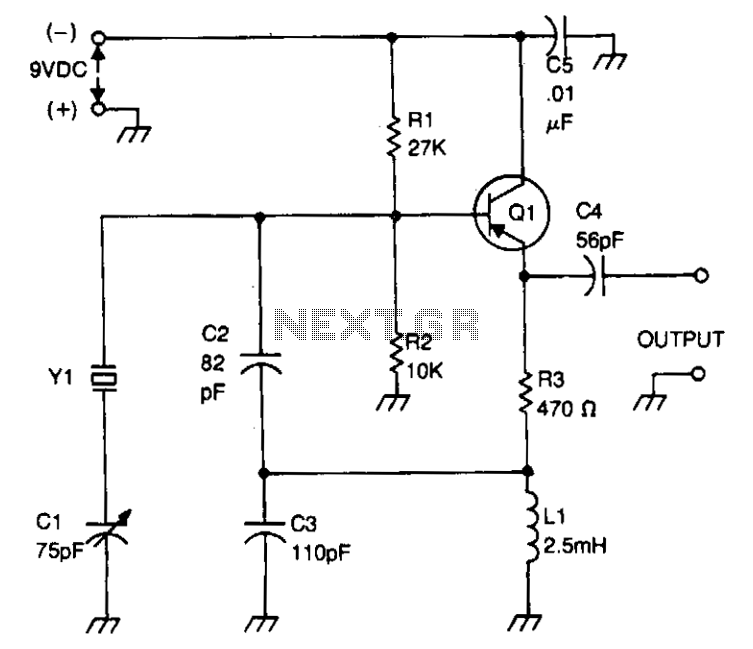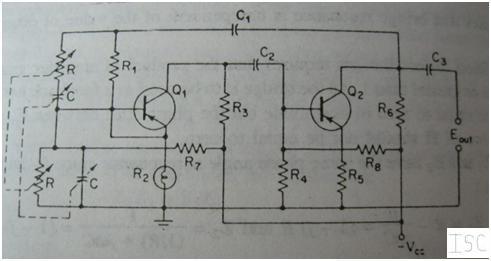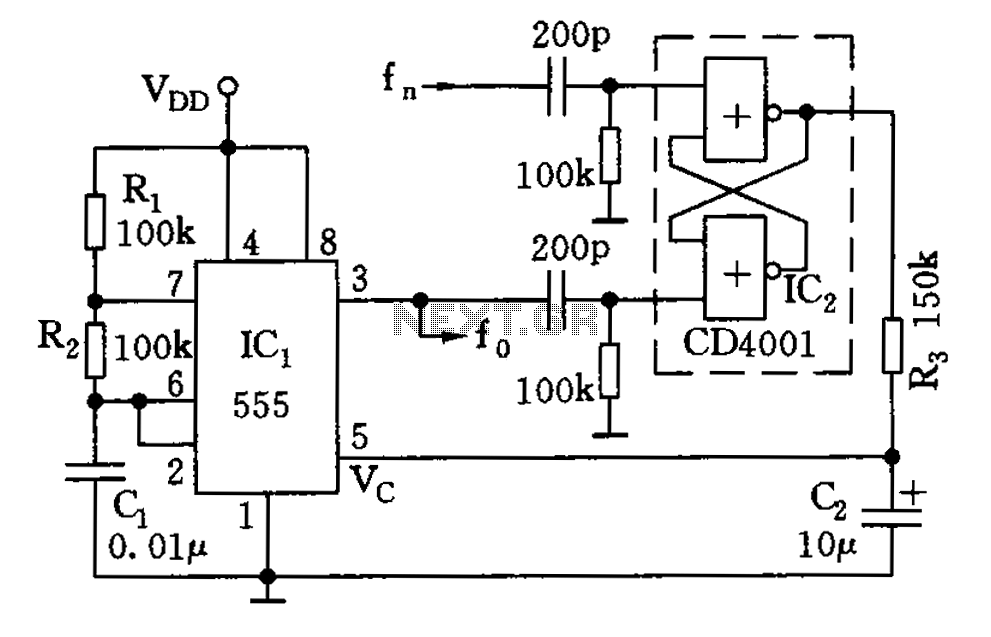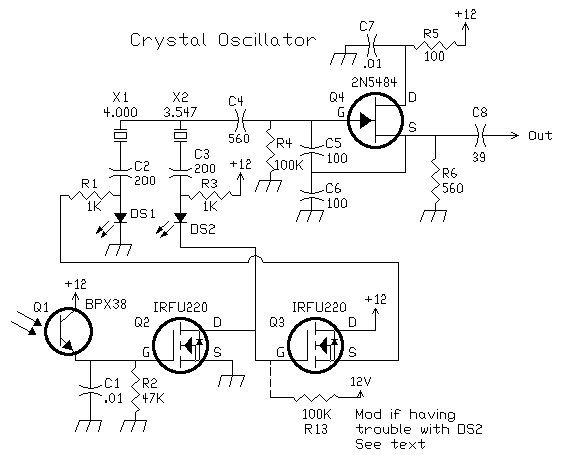
Colpitis oscillator

Bias for the PNP bipolar transistor is supplied by a resistor voltage divider network consisting of resistors R1 and R2. The collector of the oscillator transistor is maintained at AC ground through a capacitor C5, which is positioned near the transistor. Feedback is facilitated by a capacitor voltage divider comprising capacitors C2 and C3.
The circuit utilizes a PNP bipolar transistor, which requires a proper biasing arrangement to operate effectively. The resistor voltage divider formed by R1 and R2 establishes a stable bias voltage at the base of the transistor, ensuring that it remains in the active region during operation. This configuration is essential for achieving the desired amplification characteristics and maintaining linearity in the signal processing.
Capacitor C5 plays a critical role in maintaining the collector at AC ground potential. By connecting C5 between the collector and ground, AC signals are allowed to pass while DC conditions are preserved, thus preventing any unwanted DC biasing effects from influencing the output signal. The placement of C5 close to the transistor minimizes parasitic inductance and capacitance, which can adversely affect high-frequency performance.
The feedback mechanism is implemented through the capacitor voltage divider formed by C2 and C3. This arrangement allows a portion of the output voltage to be fed back to the input, enhancing the stability and response of the oscillator circuit. The values of C2 and C3 can be adjusted to modify the feedback ratio, thus influencing the overall gain and frequency response of the circuit. This feedback loop is crucial for sustaining oscillations and ensuring consistent performance across varying operating conditions.
Overall, the combination of the resistor voltage divider for biasing, the AC grounding capacitor, and the feedback network forms a robust and efficient oscillator circuit suitable for various applications in electronics.Bias for the pnp bipolar transistor is provided by resistor voltage divider network R1/R2. The collector of the oscillator transistor is kept at ac ground by capacitor C5, placed close to the transistor. Feedback is provided by capacitor voltage divider C2/C3.
The circuit utilizes a PNP bipolar transistor, which requires a proper biasing arrangement to operate effectively. The resistor voltage divider formed by R1 and R2 establishes a stable bias voltage at the base of the transistor, ensuring that it remains in the active region during operation. This configuration is essential for achieving the desired amplification characteristics and maintaining linearity in the signal processing.
Capacitor C5 plays a critical role in maintaining the collector at AC ground potential. By connecting C5 between the collector and ground, AC signals are allowed to pass while DC conditions are preserved, thus preventing any unwanted DC biasing effects from influencing the output signal. The placement of C5 close to the transistor minimizes parasitic inductance and capacitance, which can adversely affect high-frequency performance.
The feedback mechanism is implemented through the capacitor voltage divider formed by C2 and C3. This arrangement allows a portion of the output voltage to be fed back to the input, enhancing the stability and response of the oscillator circuit. The values of C2 and C3 can be adjusted to modify the feedback ratio, thus influencing the overall gain and frequency response of the circuit. This feedback loop is crucial for sustaining oscillations and ensuring consistent performance across varying operating conditions.
Overall, the combination of the resistor voltage divider for biasing, the AC grounding capacitor, and the feedback network forms a robust and efficient oscillator circuit suitable for various applications in electronics.Bias for the pnp bipolar transistor is provided by resistor voltage divider network R1/R2. The collector of the oscillator transistor is kept at ac ground by capacitor C5, placed close to the transistor. Feedback is provided by capacitor voltage divider C2/C3.





